TORC2 plasma membrane localization is essential for cell viability and restricted to a distinct domain
- PMID: 19144819
- PMCID: PMC2649262
- DOI: 10.1091/mbc.e08-10-1001
TORC2 plasma membrane localization is essential for cell viability and restricted to a distinct domain
Abstract
The conserved target of rapamycin (TOR) kinases regulate many aspects of cellular physiology. They exist in two distinct complexes, termed TOR complex 1 (TORC1) and TOR complex 2 (TORC2), that posses both overlapping and distinct components. TORC1 and TORC2 respond differently to the drug rapamycin and have different cellular functions: whereas the rapamycin-sensitive TORC1 controls many aspects of cell growth and has been characterized in great detail, the TOR complex 2 is less understood and regulates actin polymerization, cell polarity, and ceramide metabolism. How signaling specificity and discrimination between different input signals for the two kinase complexes is achieved is not understood. Here, we show that TORC1 and TORC2 have different localizations in Saccharomyces cerevisiae. TORC1 is localized exclusively to the vacuolar membrane, whereas TORC2 is localized dynamically in a previously unrecognized plasma membrane domain, which we term membrane compartment containing TORC2 (MCT). We find that plasma membrane localization of TORC2 is essential for viability and mediated by lipid binding of the C-terminal domain of the Avo1 subunit. From these data, we suggest that the TOR complexes are spatially separated to determine downstream signaling specificity and their responsiveness to different inputs.
Figures
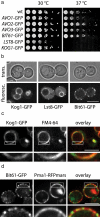
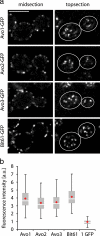
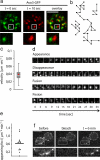
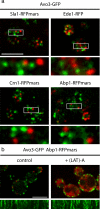

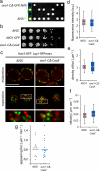
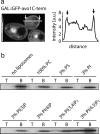
References
-
- Araki T., Uesono Y., Oguchi T., Toh E. A. LAS24/KOG1, a component of the TOR complex 1 (TORC1), is needed for resistance to local anesthetic tetracaine and normal distribution of actin cytoskeleton in yeast. Genes Genet. Syst. 2005;80:325–343. - PubMed
Publication types
MeSH terms
Substances
LinkOut - more resources
Full Text Sources
Molecular Biology Databases

